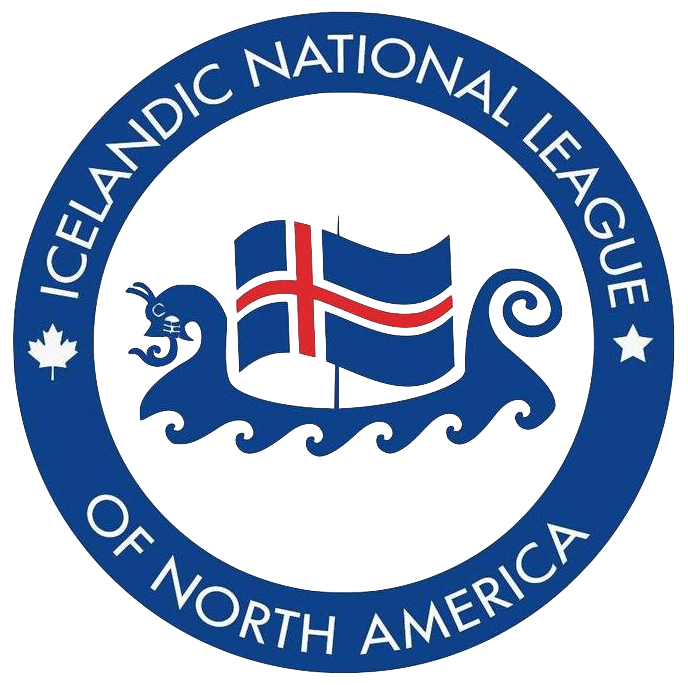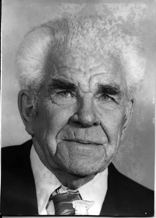Björgvin Sigurdson
1901-1982
Civil engineer/Construction
Iceland/ Banff, AB
November 3, 1901, Björgvin, the fifth child of Sigurfinnur Sigurdsson and Sesselja Arnadóttir – was born in Skaftafellssýla, Iceland. Due to poverty and extreme family hardships, Björgvin´s parents gave him to a young couple who were planning to emigrate to Canada. The young couple came to the Framnes area of New Iceland where they raised Björgvin with their children. The young couple knew about Björgvin´s aunt. At age five, Björgvin‘s aunt – Guðleif Hanforð (Sesselja´s sister), took him and raise him as one her own.
In the 1930s, Björgvin´s family came to Canada. First, they settle in the Framnes area, then Spyhill and finally in the late 1930s to Leslie, Saskatchewan. Here family relationships were rekindled to include Björgvin´s older siblings - three brothers, a sister and two younger brothers.
In 1922, Björgvin moved from Framnes, Manitoba to Leslie, Saskatchewan with the Hornfjorð family.
After a gap in his education, Björgvin completed his high school in Leslie, then enrolled at the University of Saskatchewan, graduating with a degree in Civil Engineering. His university career like his previous education was extended because funds were required to support his university fees, clothing, food and housing.
Following his graduation, Björgvin worked for several mining companies in northern and eastern Canada. During the Second World War, he joined the army and became a lieutenant in command of the 25th Field Company, Royal Canadian Engineers. This command took him and his company across Canada building radio communication towers. One of his proudest achievements was the construction at Aklavik, N.W.T. of 300 foot radio towers erected on permafrost. This, indeed, is something that had not been attemped previously and to the credit of the company, the towers are still standing. After the war when his company was demobilized, Björgvin returned to Leslie where he managed the local co-op farm fuel distribution centre. He was offered an engineering position with the Saskatachewan Department of Highways. He worked here for several years. He joined Parks Canada and was responsible for route selection and supervision of highway construction through Canada´s National Parks. At this time the Trans Canada Highway was being planned and constructed. The route through Banff, Yoho, Glacier and Mount Revelstoke Park as well as the Banff, Jasper Highways were a part of Björgvin´s contribution.
While working in the Riding Mountain National Park, Björgvin met Ruth Ward who was also a Parks Canada employee. Their friendship blossomed and in 1951 Ruth and Björgvin married .
Björgvin enjoyed gardening. While he worked for Parks Canada, he and Ruth had a home on Deer St. in Banff. In spite of Banff´s unfavorable climate, they managed to have a vegetable garden and many beautiful flowers. Björgvin built a small green house in their back yard to give his plants an early start, and then had to build a high fence to protect the garden from the hungry deer. One of his tricks was to start potato plants indoors in brown paper bags. Then when spring frosts left Banff, he would set the plants, bag and all, into the garden and hill them appropriately. He became the envy of the neighborhood as he harvested new potatoes from his garden.
Björgvin and Ruth loved animals. They always had pet dogs – some of questionable pedigree, followed by dachshunds and finally Freya a white Icelandic dog. In his early work along the Trans Canada route through the Mountain Parks, Björgvin often took his sturdy black dog with some apparent bulldog characteristics with him on his back country survey trips to keep him company as neither were upset by the solitude or the need to sleep under the stars.
After his retirement from Parks Canada Ruth and Björgvin moved to Calgary. They continued their success as gardeners and their indulgence in their four-legged friends.
Björgvin became active with a group of Icelanders and helped to establish the Leif Eiriksson Icelandic Club of Calgary as well as the Scandinavian Centre Co-op. He and Ruth had leading rolls in the club activities. Björgvin taught Icelandic classes, led tour groups from Iceland on mountain trips and acted as the club’s “Ambassador at Large”. During this time when Leif Eiriksson Day was proclaimed in Calgary, the Danish Canadian Club hosted dinners with the other participating clubs. It was at one of these that Björgvin was the recipient of the Leif Eiriksson Award for dedicated community service.
Björgvin was always interested in the history of the Icelandic settlements in Western Canada. This enthusiasm and knowledge formed his efforts to have the Stephan G. Stephansson homestead at Markerville developed as a Provincial Historic Site. His organizational skills, good humor and patience were an inspiration to the Stephan G. Stephansson Committee as they worked on this project with government officials. For many months Björgvin spent a great deal of time translating Stephansson’s letters and prose from Icelandic to English. Several of these have been published and are on exhibit at the Historic Site. At the dedication ceremonies in August, 1982, Björgvin was recognized along with the other contributors to this project. Participants regretted that Björgvin, one of the prime movers, was not well enough to attend the ceremony.
Björgvin passed away in Calgary on October 12, 1982 with funeral services held on October 15, 1982 at "The Chapel on the Hill". Cremation followed.


